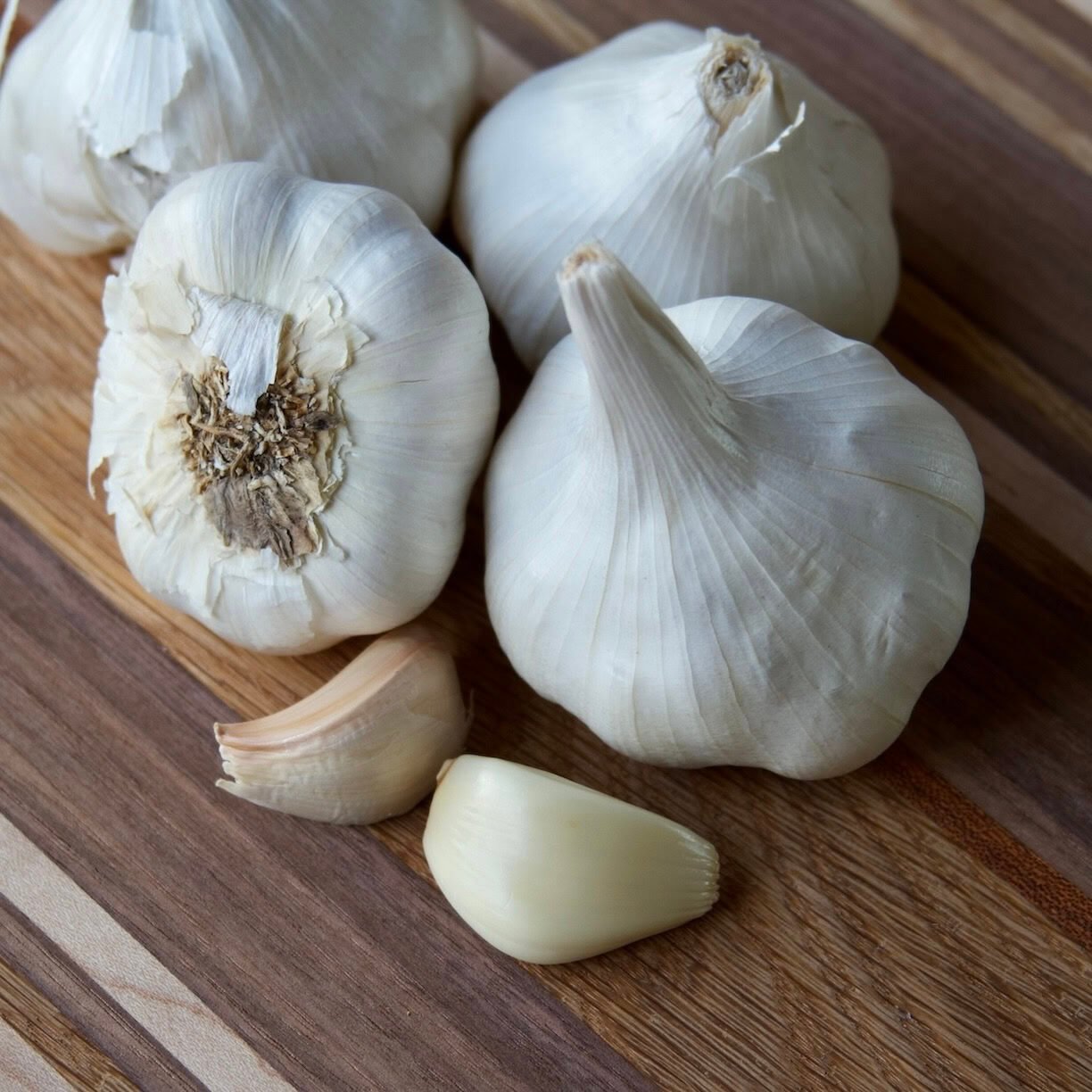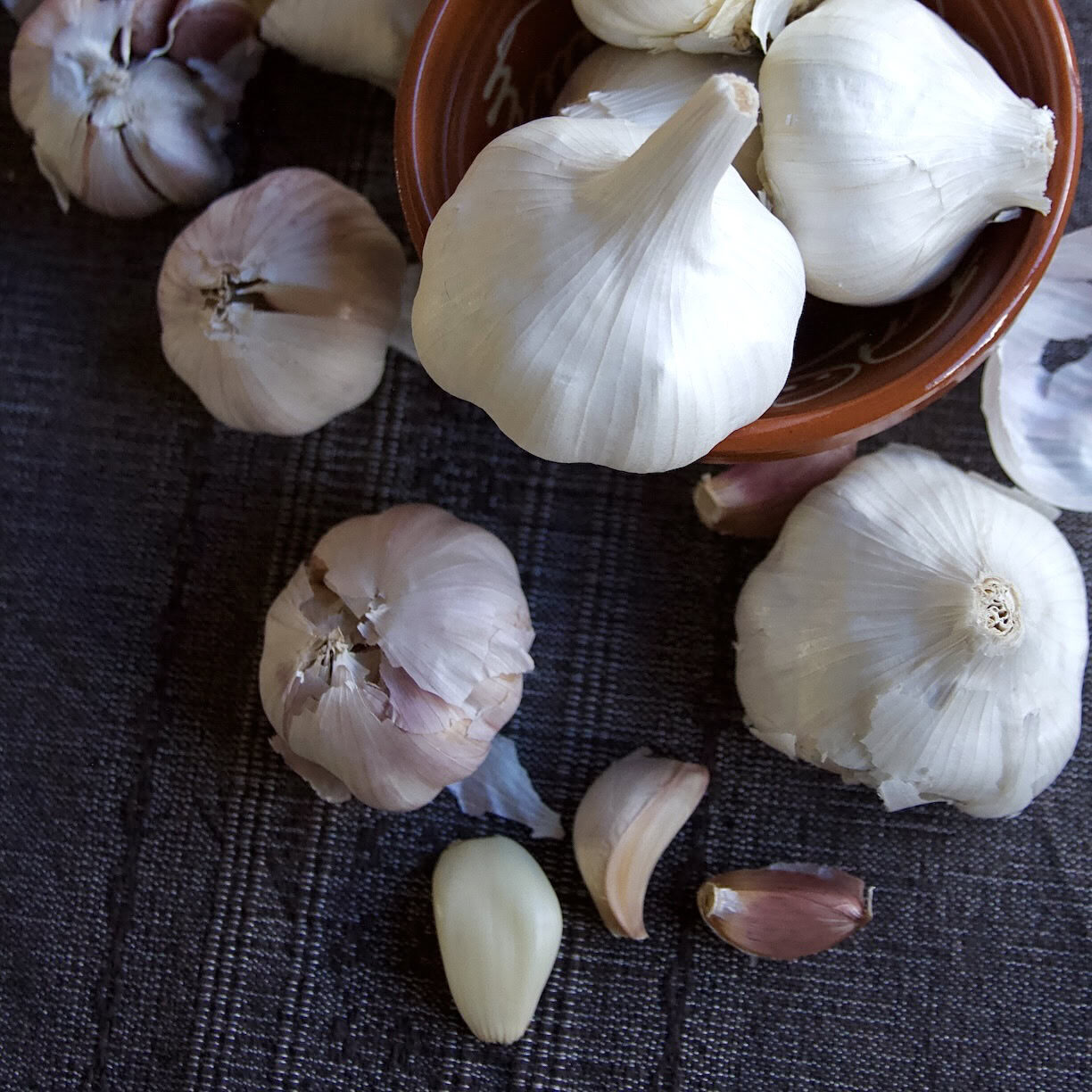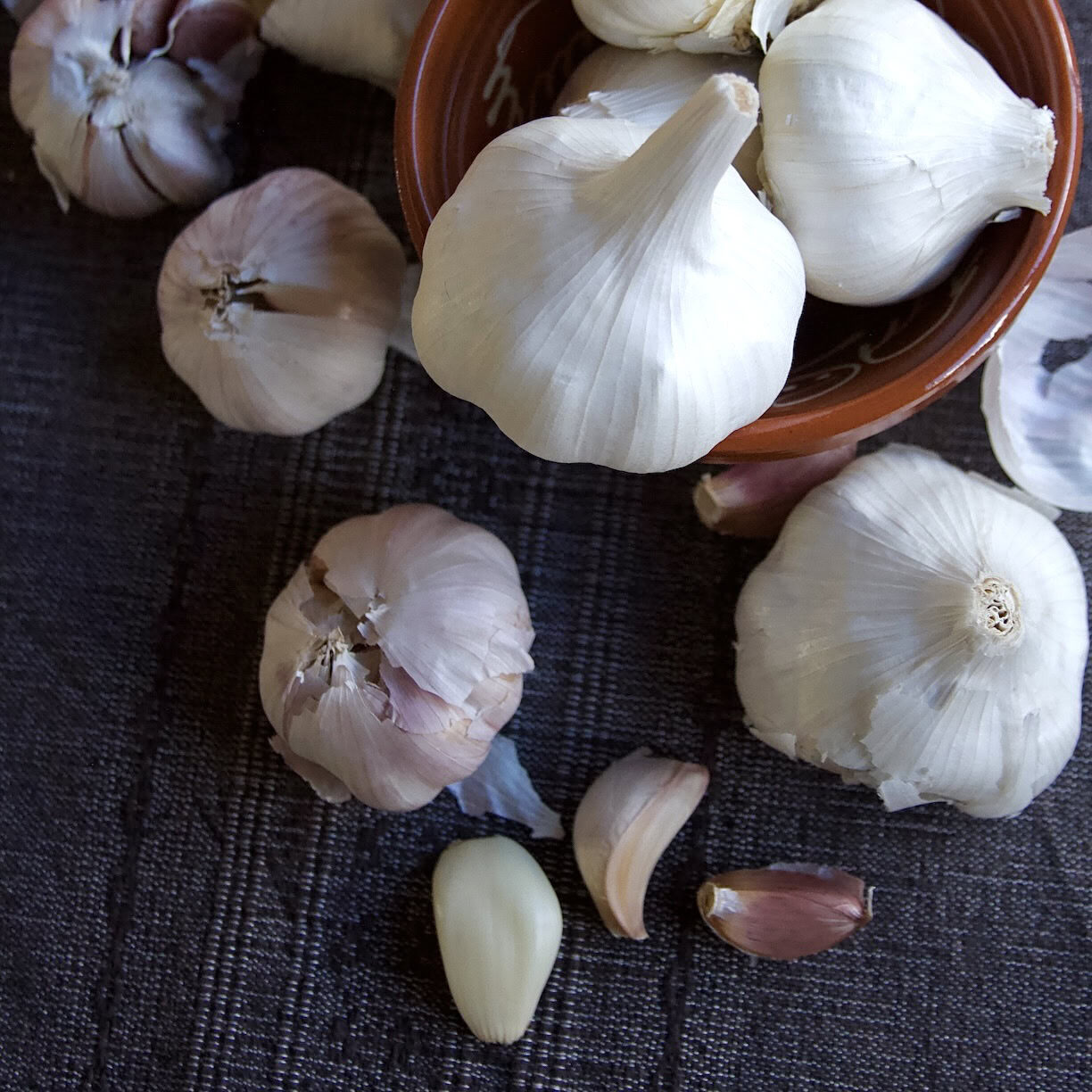Garlic

REGION OF ORIGIN
Garlic was likely first domesticated around 7,000 years ago in the mountainous areas of Central Asia, including parts of present-day Uzbekistan, Turkmenistan, Afghanistan, and Iran.
PART & COLOR
The plump, crescent-shaped cloves have a smooth, off-white surface and a creamy, pale yellow flesh. They are protected by a papery skin, which is often white but can have pink and purple hues depending on the variety. They become a beautiful caramelized golden brown when roasted. Dehydrated garlic powder is off-white to light beige.
HARVEST
Garlic needs cold temperatures to properly develop, so it is planted in the fall so it can establish roots before the winter. It grows through the cold months but then thrives in full sun as it matures. The bulbs are thus ready the following summer when the lower leaves turn yellow. The entire plant is dug up and the bulbs are cured and dried for several weeks. This process mellows their flavors and hardens their outer skin, which facilitates storage, transportation, and culinary use.

FLAVOR & AROMA PROFILE
Garlic’s aroma is infamous. It is potent and sulfurous scent, but it also carries earthy and sweet notes. When crushed or chopped, the cloves' volatile oils cut through the air with their sharp pungency. Anyone standing nearby can't help but anticipate the many flavors to come.
Depending on the type, raw garlic can have a biting, robust heat that dominates the palate. However, it undergoes a remarkable transformation when cooked. The harsh, slightly bitter edge mellows into a milder warmth with hints of sweet caramel and roasted nuts. Cooking garlic also gives it a softer, creamier texture that melts effortlessly into other ingredients.
Garlic powder, on the other hand, offers a more concentrated and consistent garlic flavor, which can be rather convenient and versatile depending on your needs.
CULINARY USES
Garlic is one of the most popular flavoring agents worldwide. Raw garlic imparts a sharpness to dressings, marinades, and salsas, elevating the flavors of other fresh ingredients. When sautéed or roasted, it transforms, adding a rich caramelized sweetness to meats, poultry, seafood, and vegetables.
Garlic is essential to creating the base for many sauces, such as marinaras, aiolis, French pistou, Italian Alfredo, and Argentine chimichurri. It is foundational, the base flavor that builds complex dishes from the ground up.
Garlic powder can be useful in evenly distributing its flavor, whether to add a subtle garlic note or to intensify a dish's overall flavor profile. From Mediterranean to Asian to Latin American cuisine, garlic is a mainstay and we really must appreciate its magic.



